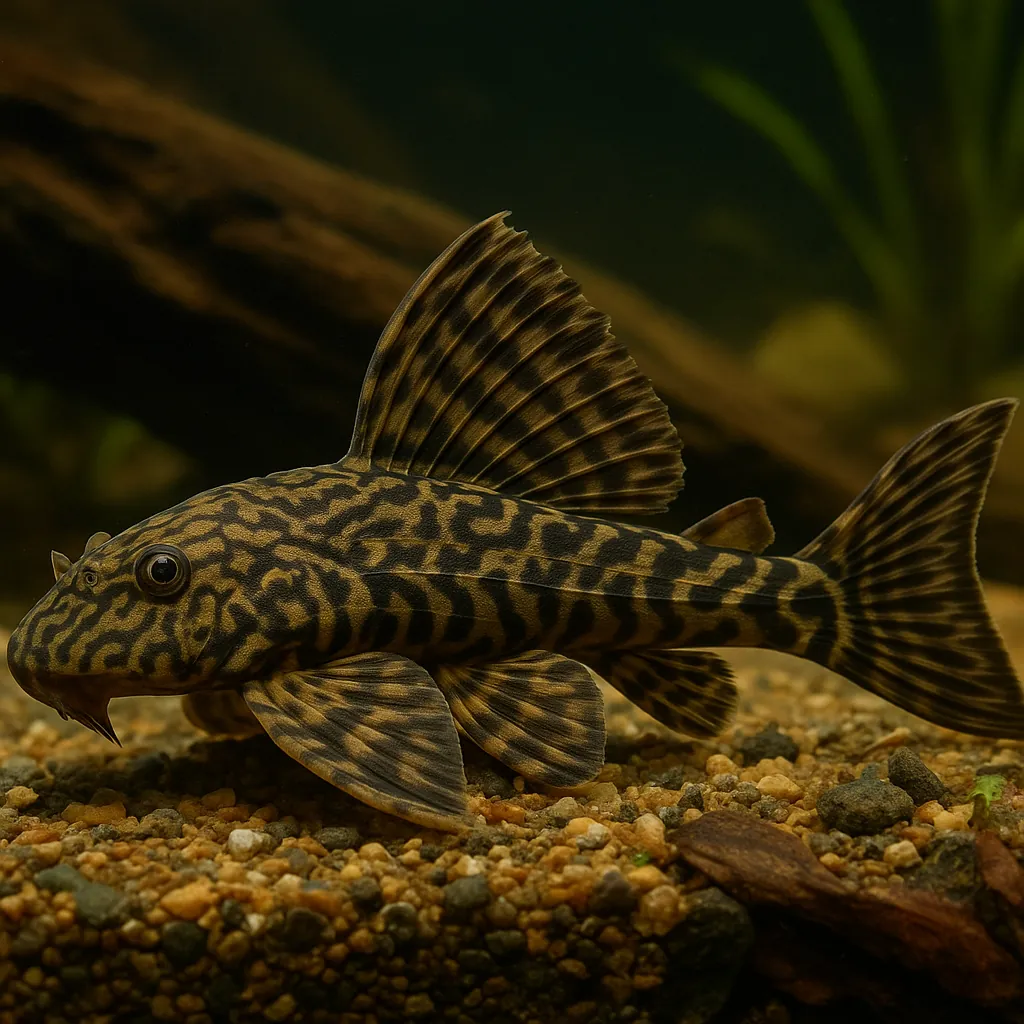
Butterfly pleco
Introduction
The Butterfly Pleco, scientifically known as Dekeyseria brachyura, is a captivating freshwater fish cherished by aquarists for its unique appearance and peaceful demeanor. Its striking pattern, reminiscent of a butterfly's wings, adds a touch of elegance to any aquarium. Suitable for both novice and intermediate fishkeepers, the Butterfly Pleco is relatively easy to care for, provided its specific needs are met.
What makes the Butterfly Pleco a popular choice among aquarists?
Its distinctive markings and manageable size make it an attractive addition to community tanks, while its peaceful nature ensures compatibility with various tank mates.
Is the Butterfly Pleco suitable for beginners?
Yes, with proper care and attention to its environmental requirements, beginners can successfully keep Butterfly Plecos.
Care and Environment
Providing optimal care for the Butterfly Pleco involves replicating its natural habitat and meeting its dietary needs.
What is the minimum tank size for a Butterfly Pleco?
A minimum tank size of 120 liters is recommended for a single Butterfly Pleco to ensure ample space for swimming and hiding spots.
What are the ideal water parameters for this species?
Maintain a temperature between 25–28°C, a pH of 5.6–7.0, and water hardness within 2–18 dGH. Strong filtration and moderate to fast water flow are essential to mimic their natural riverine environment.
How should the tank be decorated?
Incorporate plenty of hiding places using driftwood, rocks, and caves. A sandy substrate is ideal, and adding live plants can provide additional cover and contribute to water quality.
What does the Butterfly Pleco eat?
Primarily herbivorous, they feed on algae and should be offered a diet rich in vegetable matter, including blanched zucchini, cucumber, and spinach. Sinking algae wafers and occasional protein-based treats like bloodworms can also be provided.
Are there any specific challenges in keeping Butterfly Plecos?
They are sensitive to poor water quality, so regular maintenance and monitoring are crucial. Additionally, while generally peaceful, males may exhibit territorial behavior, especially during breeding.
Origin and Habitat
Native to the Rio Negro and upper Orinoco river systems in Brazil and Venezuela, the Butterfly Pleco inhabits fast-flowing, well-oxygenated waters. These environments are characterized by rocky substrates, submerged driftwood, and abundant hiding spots. The water in these regions is typically soft and slightly acidic, with temperatures ranging from 23–27°C.
What type of environment does the Butterfly Pleco prefer?
They thrive in habitats with strong currents, ample hiding places, and a soft, sandy substrate.
How does their natural habitat influence their care in captivity?
Replicating these conditions in the aquarium, including water parameters and tank setup, is essential for their well-being.
Temperament and Compatibility
Butterfly Plecos are generally peaceful and can coexist with a variety of tank mates. However, males may display territorial behavior, particularly during breeding seasons.
Are Butterfly Plecos aggressive?
No, they are typically peaceful but can be territorial with their own kind, especially males.
What are suitable tank mates for Butterfly Plecos?
Compatible companions include tetras, rasboras, danios, and other peaceful community fish. Avoid housing them with aggressive or overly active species that may outcompete them for food.
Do Butterfly Plecos need to be kept in groups?
They can be kept singly or in groups, but ensure the tank is spacious enough to accommodate multiple individuals and reduce territorial disputes.
Interesting Facts
Butterfly Plecos possess the remarkable ability to change their coloration to blend with their surroundings, earning them the nickname "Chameleon Pleco." This adaptation helps them evade predators and adds to their allure in the aquarium.
Can Butterfly Plecos change color?
Yes, they can adjust their coloration to match their environment, aiding in camouflage.
How do they breed in captivity?
They are cave spawners; the male guards and fans the eggs until they hatch, typically within 5–7 days. Providing suitable caves can encourage breeding behavior.
What is their lifespan?
With proper care, Butterfly Plecos can live between 5 to 8 years in captivity.
Sources
All information in this article has been gathered from the following reputable sources:
Overview
Recommended Tank Size 52.8 Gallons (for groups of 3 or more) |
Minimum Group Size 1 |
Minimum Tank Volume 31.7 Gallons |
Maximum Adult Length 5.9 inches |
Average Adult Length 4.7 inches |
Shoaling (6+ required) No |
Preferred Water Type Soft, slightly acidic freshwater |
Temperature Range (°C) 25–28 |
pH Range 5.6–7.0 |
Water Hardness (dGH) 2–18 |
Typical Lifespan (years) 5 years |